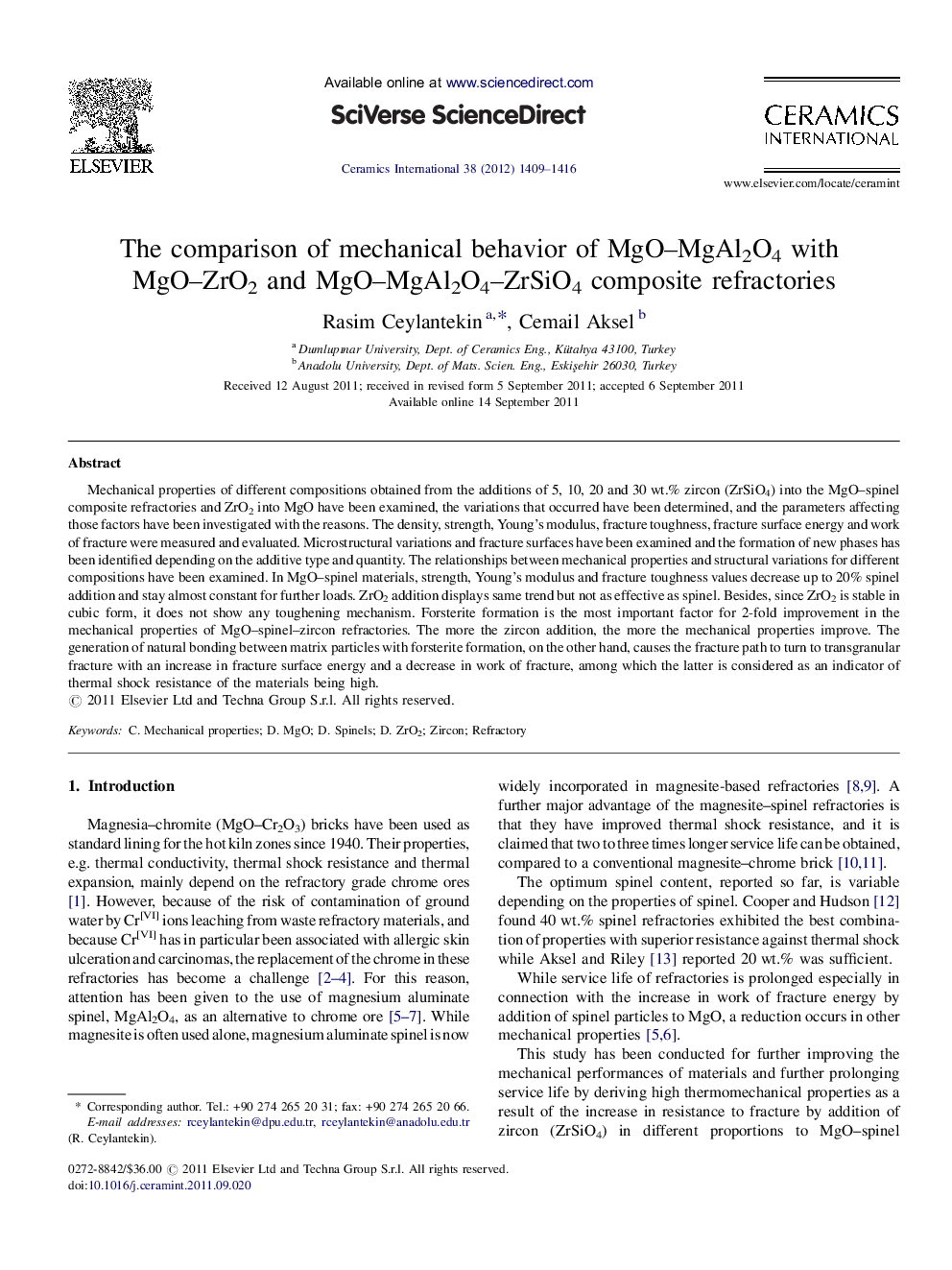| Article ID | Journal | Published Year | Pages | File Type |
|---|---|---|---|---|
| 1462540 | Ceramics International | 2012 | 8 Pages |
Mechanical properties of different compositions obtained from the additions of 5, 10, 20 and 30 wt.% zircon (ZrSiO4) into the MgO–spinel composite refractories and ZrO2 into MgO have been examined, the variations that occurred have been determined, and the parameters affecting those factors have been investigated with the reasons. The density, strength, Young's modulus, fracture toughness, fracture surface energy and work of fracture were measured and evaluated. Microstructural variations and fracture surfaces have been examined and the formation of new phases has been identified depending on the additive type and quantity. The relationships between mechanical properties and structural variations for different compositions have been examined. In MgO–spinel materials, strength, Young's modulus and fracture toughness values decrease up to 20% spinel addition and stay almost constant for further loads. ZrO2 addition displays same trend but not as effective as spinel. Besides, since ZrO2 is stable in cubic form, it does not show any toughening mechanism. Forsterite formation is the most important factor for 2-fold improvement in the mechanical properties of MgO–spinel–zircon refractories. The more the zircon addition, the more the mechanical properties improve. The generation of natural bonding between matrix particles with forsterite formation, on the other hand, causes the fracture path to turn to transgranular fracture with an increase in fracture surface energy and a decrease in work of fracture, among which the latter is considered as an indicator of thermal shock resistance of the materials being high.
